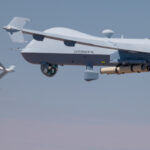
Huntington Ingalls Industries [HII] on Thursday posted higher net income and sales in its fourth quarter, driven by a pension tailwind, higher operating profits in two of its segments, and an increase in shipbuilding revenue. Net income in the quarter soared 67 percent to $249 million, $6.15 earnings per share (EPS), from $149 million ($2.96 EPS) a year ago. Adjusting for the pension benefit, net income was up 44 percent to $176 million ($4.35 EPS), short of consensus estimates by…

 By
By 











